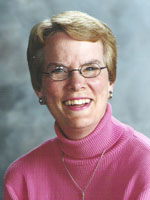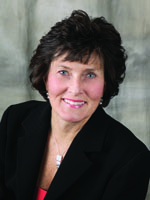Introducing the Parallel Curriculum Model in the Classroom by Carol Ann Tomlinson and Sandra Kaplan
About the Book
Using the Model and Units for Professional Development
Acknowledgments
I. Your Story, My Story, History: A Unit for Kindergarten Students by Deborah Burns
Background for Unit
Content Framework
Making Sure the Parallels Remain Central in Teaching and Learning
Unit Sequence, Description, and Teacher Reflections
II. Wind - The Unequal Heating of the Earth’s Surface: A Core Unit on Weather for Elementary Students by Jeanne Purcell
Background for Unit
Content Framework
Making Sure the Core Parallel Remains Central in Teaching and Learning
Unit Sequence, Description, and Teacher Reflections
III. Adaptation: A Social Studies Unit on Cultures for Elementary Students by Sandra N. Kaplan
Background for Unit
Content Framework
Making Sure the Parallels Remain Central in Teaching and Learning
Unit Sequence, Description, and Teacher Reflections
IV. Open Your Eyes: A Unit on Visual Art History and Artistry for Middle School Students by Meg Eason Hines
Background for Unit
Content Framework
Making Sure the Parallel of Practice Remains Central in Teaching and Learning
Unit Sequence, Description and Teacher Reflections
V. Historical Sleuthing: A Parallel of Practice Unit for Middle School Students by Carol Horn and Janice Strauss
Background for Unit
Content Framework
Making Sure the Parallel of Practice Remains Central in Teaching and Learning
Unit Sequence, Description, and Teacher Reflections
Unit Resources
Unit References
VI. The Power of Exponents: A Middle or High School Math Unit Incorporating All Four Parallels by Kristen Wogman Baron
Background for Unit
Content Framework
Making Sure the Parallels Remain Central in Teaching and Learning
Unit Sequence, Description, and Teacher Reflections
Core Curriculum Lessons
Curriculum of Connections
Curriculum of Practice Lessons
Curriculum of Identity Lessons
VII. With Liberty and Justice for All: A U.S. Government Unit Based on the Core and Identity Parallels for Middle or High School Students by Cindy Strickland
Background of Unit
Content Framework
Making Sure the Core and Identity Parallels Remain Central in Teaching and Learning
Unit Sequence, Description, and Teacher Reflections
Unit Resources
VIII. Using Biography and Autobiography to Understand Challenge, Choice, and Chance: A Unit for High School Students Incorporating All Four Parallels by Jann H. Leppien and Curt Bobbitt
Background for Unit
Content Framework
Making Sure the Parallels Remain Central in Teaching and Learning
Unit Sequence, Description, and Teacher Reflections
Core Curriculum Lessons
Curriculum of Practice Lessons
Curriculum of Connections Lessons
Curriculum of Identity Lessons
Index








